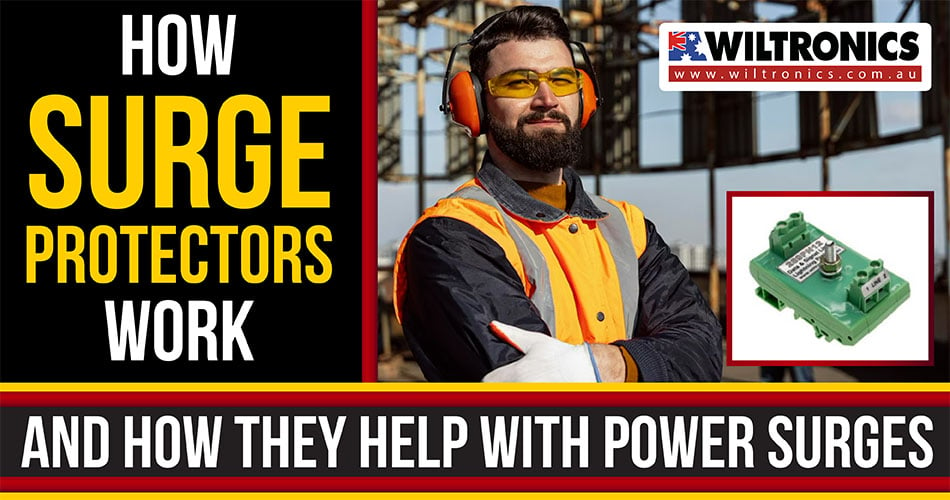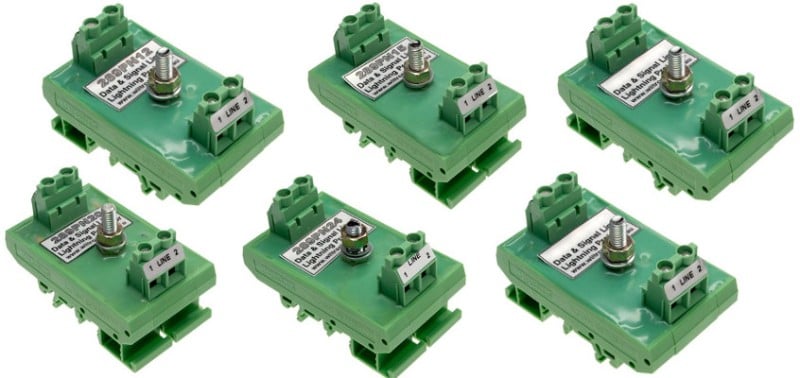How Surge Protectors Work & How They Help With Power Surges
February 23, 2023

Power surges happen for a variety of reasons, and you will need a line of defense against these events. This is how surge protectors work.
Have you ever heard a strange noise from your appliances and realised the power has gone out? This may be due to high voltage surges, causing that voltage fluctuation. Factors such as home wiring problems and lighting cause these irregularities.
Understanding surge protection ensures you and your electronics remain safe. Enter surge protectors. This post will explain how surge protectors work, why they are important, and more. Keep reading.
Surge Protectors
A surge protector protects electronics from power surges. It acts as a shield between the device and any sudden spike in voltage from outside sources. Another term for this device is power suppressor.
The components and features
- Iron core transformer. It transfers alternating current (AC) power but cannot absorb sudden surges.
- Zener diode. It protects against common circuit spikes. Also, it is often combined with a transient voltage suppression diode.
- Internal protection. In case a circuit breaker blows a fuse, this protects against device and exterior surges.
- Uninterruptible power supply. It takes in spikes using a low pass filter. Plus, it allows external power beyond the battery, which supplies uninterrupted power.
- Metal oxide varistor. A thermal fused and limits voltage three to four times that of a regular current. If exposed to many small or large transients, MOVs can self-destruct. A common type is the Parallel MOV, which extends the lifespan and current capacity.
Common electrical power surges
An electrical power surge usually lasts less than a second. Although a voltage surge is brief, it can cause damage to your electronics and appliances. In extreme cases, it could even cause a fire. These spikes in power occur for a couple of reasons:
- Faulty wiring. A wiring system that cannot withstand the electrical power of a voltage surge.
- High-powered devices turning ON and OFF. Take an AC unit or a refrigerator, for example. When it turns ON and OFF, this may fluctuate in power.
- Lighting strike. A natural phenomenon that can cause a severe voltage surge, which can burn out TVs, computers, and more.
Check out these data/line surge protector units below:

Data/Signal Line Lightning Surge Protector 289PN Series
Lightning can destroy or compromise signal communications systems and data. To protect your device from induced surges, get this lightning surge protector. Designed to provide transient protection to equipment connected to data. Plus, to small signal sensors and control lines with low-working voltages.
Suitable for use with 4-20mA signal lines and RS-422 and RS-485 data lines. Great for industrial control applications.
How Surge Protectors Work?
The surge protector detects when the voltage in an AC line exceeds a certain value (120V). When it does detects an anomaly, it will trip its internal breaker. Then, divert the excess electricity away from your connected equipment. This helps reduce power spikes that could cause harm to these costly items.
For instance, when a threshold is over 120V, it shorts to ground voltage or blocks it. Without one, anything higher than 120V can create component issues. These include a reduced lifespan of internal devices, burned wires and data loss.
Surge protectors use one of two devices to diffuse the unwanted voltage. MOV or metal oxide varistor is the most commonly used. MOVs in a power suppressor absorb any excess voltage. Then, they act as a “shunt” resistor to divert those current residues to the ground.
Another one is the GDR or gas discharge arrestor. GDRs act like MOVs. When the voltage is at a certain level, the makeup of the gas is a poor conductor. Should it surge above the level, the electrical power is strong enough to ionise the gas. This makes the GDR an effective conductor.
Both are equally effective in re-routing the transient voltage away from electronic appliances.
Surge Protectors vs Power Strips
Although they can look similar, there is a difference. One, a power strip adds extra outlet space. Whereas a surge protector defends against possible voltage spikes.
You may also see the variance in both when you come across the joules rating on the packaging. Only surge protectors have this rating — as for power strips, none.
Joules are a unit of measurement for energy, such as watts. They measure how long your appliance will be protected. Say, you bought your surge protector with 2,000 joules in it. Keep in mind that it will deplete over time. As the device takes a hit by the power spikes, the level of protection diminishes. Either in one massive strike or over time.
Some surge protectors have a light that tells you when its reservoir is low. Others have a simple alarm system to make you aware that it is time to replace it.
Why Choose Surge Protectors?
Surge protectors are ideal for when you have numerous electronics within the vicinity. There are units with multiple electrical outlets, where one can house the cords for your phone, computer, TV, and more. This charges them all while simultaneously protecting them from a voltage surge. Again, this protection is measured in joules.
For major appliances and industrial equipment you may opt for commercial surge protectors. Although a bit pricier, it is less expensive than replacing the item that would be damaged in a power spike. Thus, it saves you money in the long run. Some surge protector units also come with a warranty.
The Joule Rating
The joule rating refers not only to how much energy a device can withstand but also to how much energy it can absorb. For instance, a surge protector rated at 1,000 joules lasts twice as long as one rated at 500 joules. Surge protectors rated above 1,000 J provide better protection against surges.
For basic surge protection, at least 200 to 400 J is ideal. But if you need better protection, consider a rating of 600 J or more. For laptops, for instance, between 1,000 and 2,000 is recommended. Such ratings are also large enough for home appliances and power tools.
The Bottom Line
Use a surge protector if you have expensive electronic equipment. Or if you are in an area with frequent power outages or lightning storms. With one, it will help prevent any possible damage occurring in your building’s circuits. Besides the extra protection for these items, it also increases their longevity. This makes surge protectors more reliable over time – and a worthwhile investment.
© Electrotech Brands Pty Ltd 2023


Write a Comment
You must be logged in to post a comment.